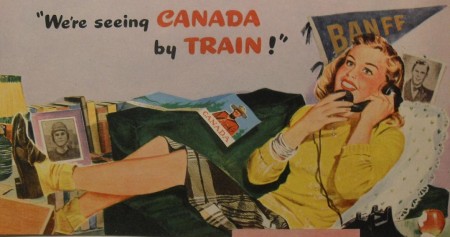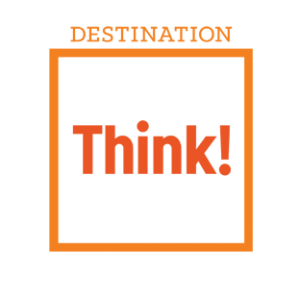1) Building a destination brand through advertising

You can’t. A destination brand is:
- The sum of experiences of a traveler during a trip (but not all experiences are equal)
- The sum of all stories somebody has hears about a destination (but not all sources are equally credible)
Ten years ago, your TV ads, brochures and other forms of marketing collateral contributed a sizeable portion of the stories people heard about a destination. Not anymore. People telling other people, aided by new forms of communication (including social media but not exclusively) is now dominant and has make brand advertising hopelessly inefficient.
Ensuring your destination has quality experiences, getting your operators up-to-speed in modern marketing and actively managing your destination’s reputation in social media, especially in niche communities is how you build and manage a destination brand.
2) People still like paper guides/call centers/newspapers/magazines/consumer shows/travel agents/etc.

Yes they do. But is it the most effective way for you to get your stories told?
I get it. It used to be so succesfull. You’re still proud of the results from 1998. And it’s really hard to stop doing something. Staff will be effected and change management in an organization is often messy.
But lets get real. Most people have moved on. The biggest bang for your buck lays elsewhere and we both know it.
Stop making excuses, take close and hard look at your activities (budget + people) and stop doing the things that have become inefficient or ineffective.
3) Operating a reservation system will generate extra revenue

It probably won’t. And if it does, it’s going to take a lot of hard work against stiff competition.
I know it’s tempting. There’s the potential for extra revenue and your hotels are putting on the pressure to fill their rooms now instead of focussing on the long term. It’s also something tangible to measure and the technology is so easy now. And cheap.
But consumers just don’t think of a DMO website as a place to transact. They have a gazillion options to book. And usually at a much better rate than the DMO will ever be able to offer.
Making a booking system produce results is hard work.
When you choose to operate your own reservation system where your accommodation operators give you specific rates and inventory, you also need people to manage this process. That means chasing operators for rates and inventory, sending out commission cheques, chasing operators for money and dealing with customer service issues.
You’ll also need people who stay on top of your website and the conversion funnels. What advertising drives bookings? Where do people drop off in the funnel? What do you need to tweak to increase your conversion rate?
I’m not saying offering bookings is a bad idea, especially not if you’re a city DMO. An aggregator like JackRabbit is a good option add booking capabilities to your website without the operational overhead for example.
An even better option is if you have a way to differentiate yourself from online travel agents by creating value added packages online travel agents can’t offer and target these to niche audiences.
4) Processes and organizational structures from the 90’s still work today

They don’t. The workplace of the 90’s was very much a leftover from the industrial age.
Let’s see what has changed over the last 15 years. Technology and the internet has turned travel planning and booking up-side-down. Everybody knows this, but most DMO’s just added some form of online unit or department in their structure and left it at that.
And there is more! Technology has also completely changed the way people work with new productivity and collaboration tools. Technology is becoming ubiquitous. Cloud computing allows you to outsource pretty much everything and access your data from anywhere. People stay connected through mobile devices and take work home on their laptops while Social Media has completely blurred the line between professional and private life.
The industrial age is over. All of the above has completely changed the way new generations think about the workplace. Corporate structures, hours of work, roles and responsibilities, staff retention all has to be re-thought. Just read Don Tapscott and Charlene Li.
5) The one stop agency of record is still effective

It usually isn’t. More and more DMO’s are challenged with their agencies of record based on what I hear at conferences.
From my perspective, the reason why most traditional agencies are still having a hard time with digital and are often completely clueless about social is because their culture and business model is based on traditional advertising principles.
In traditional advertising, you only have one shot at getting it right. You buy the media, produce the communication pieces and let it ride. An outcome of that is getting the creative right the first time is really important. As a result, right brain creatives run traditional agencies.
In digital marketing, the creative is still important but you should spent more time after launch by looking at the data, and keep iterating the tactics to keep perfecting it. Data and real-time analysis is part of a digital agencies culture. That’s a fundamental difference.
In social media, on top of digital marketing principles, you also need to humanize the message and open up your brand for consumer input. That’s often just too much to ask.
The result is that in most cases, DMO’s need to go best-of-breed and hire multiple, specialized agencies and contractors. With the new collaboration tools, it’s much easier to manage these days. We experience this with the increased number of RFPs out there specific to social media. Maybe a new ‘agency of record’ model will emerge at some point but that will take some time.
A one-stop-shop is definitely easier to manage on an executive level. Only one RFP to run, it simplifies managing the relationship (only one person to have lunch with or yell at) and streamlines back-office accounting processes. If you still want to go one-stop-shop, look for a digital agency that also does traditional instead of a traditional agency that also does digital.
Note: I understand that especially the first and last point on this list can be perceived as a pitch for my company. The reality is that this is exactly why I joined Think! in the first place. To help DMOs innovate and break through some of the conventional wisdom out there.

